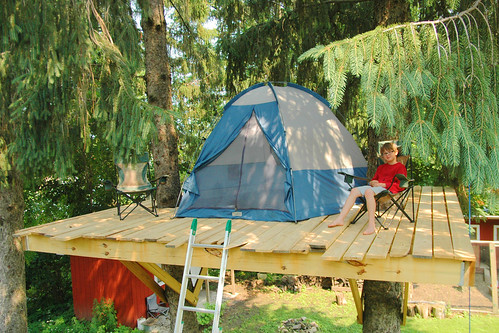 |
| Blue is lake. Spring green is swampy. Olive checkerboard is agricultural. Rainbowed areas show 40 acre parcel. Everything to scale. |
From the standpoint of deer hunting, the large, swampy area to the east of the parcel is a natural sanctuary for deer. One major upside is the location of the lake. It creates a natural funnel. Deer almost have to cross the parcel when they are working their way around the swamp.
The downside is that the region immediately east of the parcel is heavily hunted by folks who shoot "anything with horns". It is their property. They are current on their taxes. I do not judge.
The area immediately west of the property is hunted by a younger man whose motto is, "If its brown, its down." He judges the success of his hunting season by the number of carcasses he can hang on hooks in the barn.
It has become increasingly clear that the only way to grow big bucks is to create even better sanctuary cover on the property than the pickle-shaped swamp and to provide them, and does, with enough vittles during hunting season (October 1-December 30) to keep them on the property.
Consequently, you will start seeing a great deal of photographic analysis where the photos are taken from about 42-to-48 inches of elevation.
 |
| This is a natural bowl with the rim highest on the southwest edge. It is a natural bedding place from the standpoint of prevailing winds. |
 |
| And it lacks cover over 24". |
Consider your reaction to this photo
 |
| Something about this photo just gives you the willys, doesn't it? Image from HERE |
 |
| But this one seems fine, right? What is the difference? Image from HERE |
https://www.whitetailhabitatsolutions.c ... ding-guide
ReplyDeletehttps://www.whitetailhabitatsolutions.c ... strategies
More on hinging. He mentions some of the issues and the importance of side cover.
https://www.whitetailhabitatsolutions.com/blog/hinge-cut-bedding-guide Reposted because the link was truncated.
Delete"*Long ago, MN grouse studies showed that staggered rows and irregular plantings of trees increased population #s 10Xs over straight, grid pattern plantings. I have experienced many times over that this is true for whitetails as well, and most likely most wildlife species. The reason in the study? Because straight and grid patterned plantings increased disease, stress and warfare among grouse populations. STRESS. Deer are creatures of stress, so it makes sense that as the stress level of bedding area increases, the use and level of attraction decreases.
ReplyDelete*Conifer plantings for deer should always be planting irregularily, randomly and with absolutely no straight lines or even grid patterns. Grid patterns equal boards per food and low wildlife values, non-grid patterns equal low timber values and high wildlife values. I guess it depends on if you are a tree farmer, or deer hunter as to which is best for you."
http://tinyurl.com/hyu8825
Same guy points out that grid pattern plantings like in those softwood patches are not useful.
http://tinyurl.com/gta5ta4
ReplyDeletehttp://tinyurl.com/glscbon
working links for
https://www.whitetailhabitatsolutions.c ... ding-guide
https://www.whitetailhabitatsolutions.c ... strategies
More on hinging. He mentions some of the issues and the importance of side cover.